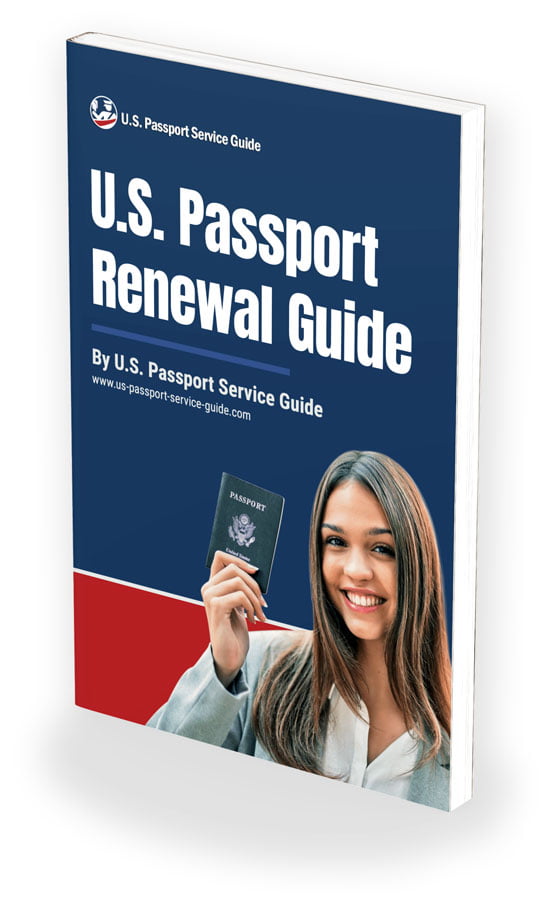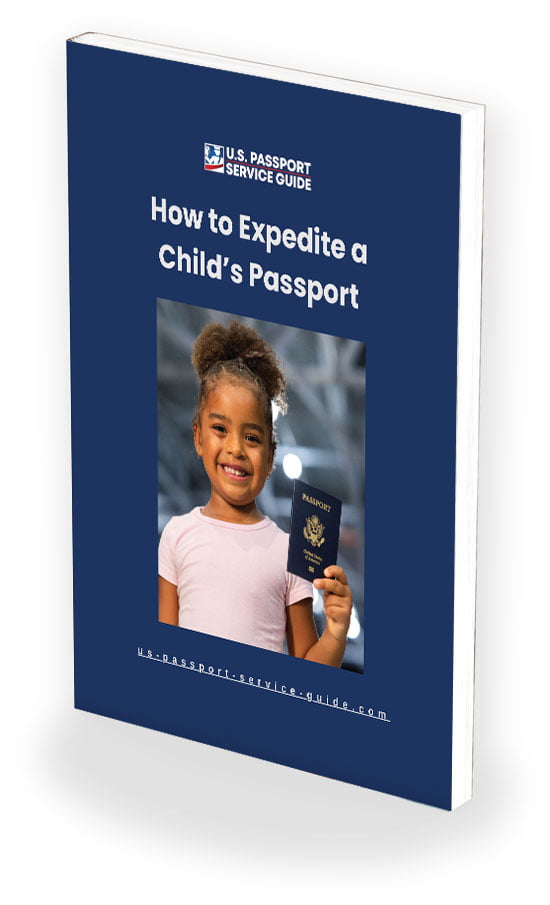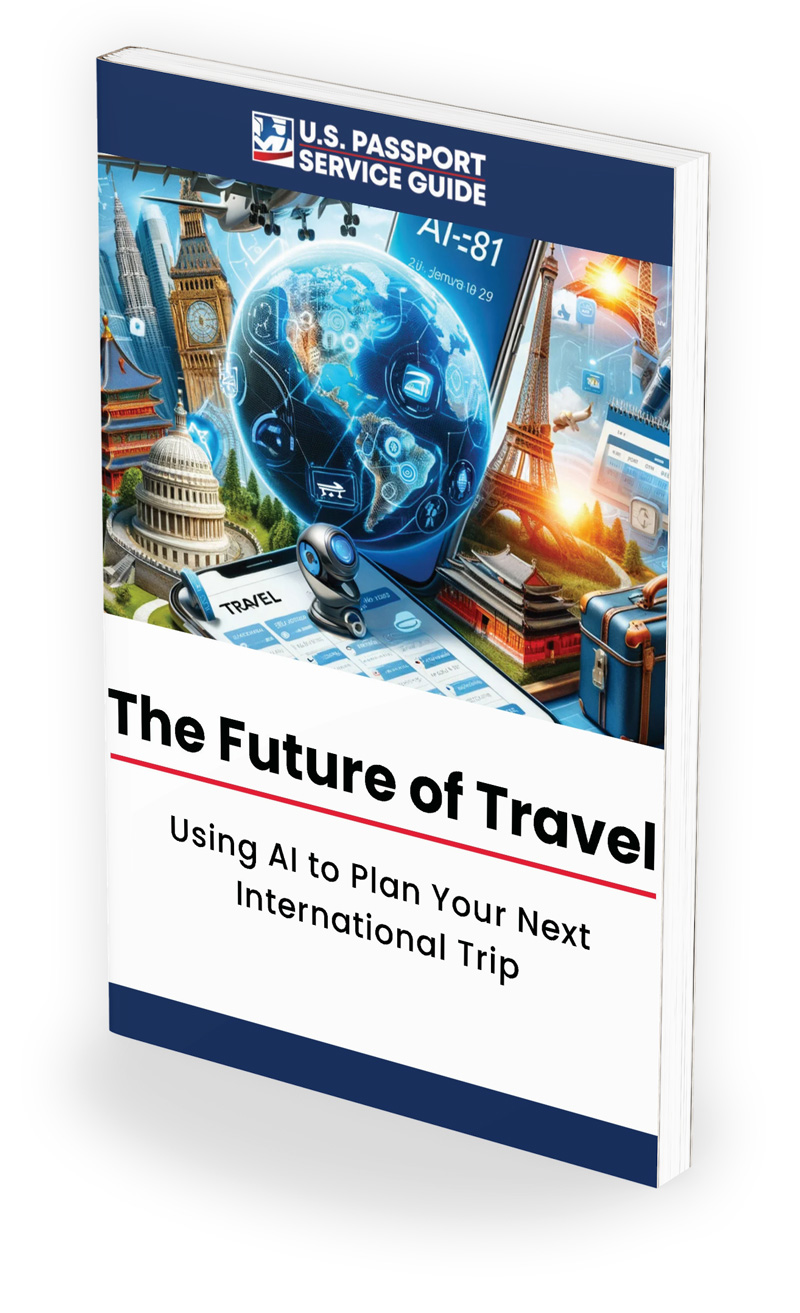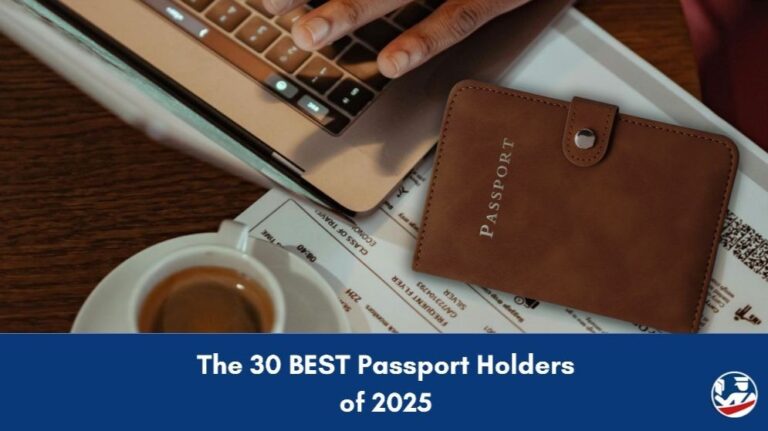For Americans looking to travel abroad, Canada is a great option. Its proximity to the U.S., affordability, and renowned hospitality make it an excellent destination.
When most people imagine a Canadian vacation, they imagine soaring vistas and awe-inspiring landscapes. However, there’s more to Canada than just its natural beauty.
What visitors tend to overlook is that Canada is also home to some of the most unique and tourist-friendly cities in the world. Whatever your idea of an ideal getaway might be, there’s a good chance Canada fits the bill.
In our guide, we have compiled five of the best cities in Canada for Americans to visit to help you plan the perfect escape North of the U.S. border.
Table of Contents
Passport Requirements for Americans Traveling to Canada
Crossing the American-Canadian border requires proper documentation.
While U.S. travelers can enter Canada by land or sea with both proof of identity and proof of citizenship, re-entry to the United States requires a valid WHTI-compliant document.
For air travel to Canada, all travelers, regardless of age, must possess a valid U.S. passport.
If this information is new to you, as it is for many Americans planning a trip to Canada, don’t worry. Expedited passport services are available to ensure you have the necessary documentation for crossing the Canadian border.
Please be aware that if you’re pressed for time, the only way to obtain a passport in under 2 weeks is to apply through a Regional Passport Agency or a registered expedited passport courier service.
For a more complete overview of passport requirements for Americans traveling to Canada, please refer to our detailed guide: Canada Travel Requirements.
Now, without further ado, let’s explore five of the best Canadian cities for Americans to visit.
✈️ Need Your Passport Fast?
Traveling soon? Get your passport in as little as 24 hours with our trusted expedited service. Or choose Priority Service for delivery in just 7–9 business days — now with 15% off.
1. Vancouver, British Columbia

Vancouver is a destination that truly offers something for everyone. With a population of just over 600,000—comparable to Baltimore, Maryland—it is Canada’s eighth-largest city. Within its borders are some of the finest restaurants, museums, and performing arts experiences in the entire country.
There are even a variety of nearby opportunities for travelers looking to experience some of Canada’s famed great outdoors. The area is home to first-rate parks, paddling tours, biking and hiking trails, and golf courses.
Vancouver is a truly exceptional destination for American travelers looking for a diverse array of what Canada has to offer while also having access to first-rate accommodations and amenities.
Cost
A comfortable stay in Vancouver costs around $424 a day for the average tourist. However, frugal and savvy travelers can find plenty of ways to cut those costs down to a more affordable budget, such as taking advantage of some of Vancouver’s free attractions, like Stanley Park and Kitsilano Beach.
Travel Time
Vancouver is less than a 3-hour flight from LAX. Travelers from the East Coast will have a longer journey, with a 6-hour flight from JFK and a 3-hour time zone difference to adjust to.
Climate
Vancouver boasts some of the mildest weather in Canada. Temperatures rarely exceed the 70s°F and seldom drop below the mid-30s°F. November through March is typically the “rainy season,” with substantial rainfall but minimal annual snowfall—averaging only 15 inches.
Best Time to Visit
There’s no bad time to visit Vancouver. The city offers year-round attractions and consistently pleasant weather.
However, April through October is the most popular period due to mild temperatures and a host of events like the Vancouver Cherry Blossom Festival, the Vancouver Folk Music Festival, and the Vancouver International Film Festival.
Amenities
- Food: Vancouver’s excellent growing climate makes it a haven for organic, farm-to-table dining. The city also boasts some of the freshest seafood. Guides from Vancouver Magazine’s Restaurant Awards can help you find the best dining spots.
- Accommodations: Vancouver offers a range of accommodations from budget-friendly hostels to five-star hotels. Additionally, its proximity to parks and wildlife areas makes camping a viable option. The Visitor’s Bureau website lists several popular campgrounds where you can make reservations to stay.
- Transportation: Vancouver’s public transit system includes reliable and affordable trains, buses, and ferries. While cab services are available, ride-sharing apps like Uber and Lyft are not.
For more control over your travel, consider renting a car or biking; Vancouver is a very bike-friendly city, making biking an excellent and often preferred way to get around.
Must-See/Must-Do Attractions
- Visit a park: With over 250 parks, Vancouver’s natural scenery is a must-see.
- Check out the Arts & Culture Scene: The Vancouver Art Gallery houses an impressive collection of over 10,000 works.
- Take a tour of historic Gastown: Gastown, one of Vancouver’s oldest neighborhoods, features historical buildings, cobblestone streets, vintage lamp posts, and a famous steam-powered clock. Despite its historic charm, Gastown also offers trendy shops and eateries.
- Explore Capilano Suspension Bridge Park: Experience a view like no other as you walk across the 449-foot Capilano Suspension Bridge that soars 230 feet above the majestic Capilano River.
Advice from the Locals
- Don’t limit yourself to the city limits. Vancouver’s outskirts offer just as many exciting activities as the city center.
- Skip the coffee chains. Vancouver’s local coffee shops are a must-try, so avoid chain coffee shops in favor of local baristas. Take a walk down Davie Street and stop by Melriches Coffeehouse for an Americano and a hot, flaky breakfast croissant—you won’t be disappointed!
2. Winnipeg, Manitoba

Winnipeg, affectionately known as “The Peg” by many Canadians, is the capital city of Manitoba. With a population of approximately 849,000, it is comparable in size to Seattle, Washington, but twice as spacious.
Situated at the forks of the Assiniboine and Red Rivers, Winnipeg offers a unique blend of must-see sites, diverse cultures, and fascinating history. While it may not receive as much tourist attention as some other Canadian cities on our list, Winnipeg is truly a hidden gem nestled in the central Canadian prairie.
Cost
Winnipeg is one of the most affordable Canadian cities to visit. For just a few hundred (US) dollars a day, travelers can enjoy a reasonably high-end experience in Manitoba’s capital. Travelers should plan to spend about $253 a day; however, there are plenty of ways to cut costs and have a more budget-friendly visit in Winnipeg.
Travel Time
Winnipeg is in the Central Standard Time Zone and equidistant from both U.S. coasts. Traveling from Minneapolis, Minnesota, is only a 90-minute flight or about an 8-hour road trip.
Climate
Winnipeg’s weather is similar to that of the American city of Fargo, North Dakota. Situated in low, flat terrain, Winnipeg experiences arctic winds and significant snowfall. Winter temperatures average in the low 10°F range, with wind chills often causing dips into sub-zero temperatures. In contrast, Winnipeg’s summers are short but pleasant, with average temperatures in the high 70°F to low 80°F range.
Best Time to Visit
The best time to visit Winnipeg depends on your travel preferences.
Many visitors prefer Winnipeg in the summer because the city comes alive in the beautiful weather with festivals and a variety of opportunities for outdoor fun.
Despite the chilly winters, Winnipeg offers plenty of fun outdoor activities such as sledding, ice skating, ice climbing, ice fishing, and cross-country skiing.
Of course, Winnipeg’s excellent museums, theaters, shops, and eateries are enjoyable at any time of the year!
Amenities
- Food: Winnipeg’s culinary scene is one of the best reasons to visit! The city’s cultural melting-pot origins and booming local foodie scene offer a wide variety of cuisines. From savory burgers and fresh microbrews to deer tartare and the flavorful regional specialty, “Winnipeg Goldeye,” Winnipeg’s local eateries offer many must-try dishes!
Can’t decide where to eat or drink? Take one of Winnipeg’s tasting tours to sample a wide variety of the city’s best offerings. - Accommodations: Winnipeg offers a range of accommodations to suit any budget or comfort level, including high-quality hotels, local B&Bs, and even a hostel at the University of Winnipeg.
- Transportation: Getting around Winnipeg is surprisingly easy. For drivers, traffic is light, and parking is readily available (free after 6 pm!).
Public transportation is a solid option as well, with the city’s bus system being reliable—even in snowy months.
Must-See/Must-Do Attractions

- Spend a Day at The Forks: Built on a site with several millennia of human history and exchange, The Forks now houses some of the best museums, entertainment, shopping, and dining in the city.
- Tour the Canadian Museum for Human Rights: This museum is the first museum “dedicated to the evolution, celebration and future of human rights.” Its mission is “to build understanding, promote respect and encourage reflection.”
The Canadian Museum for Human Rights houses must-see exhibitions and galleries that span topics such as music, climate justice, and historical events such as the Holocaust and its impact on human rights. - Visit the Assiniboine Park Zoo: Winnipeg’s famous zoo boasts over 80 acres that over 150 animal species from all around the world call home. The Assiniboine Park Zoo is both educational and impressive, a great place to learn about conservation and habitat preservation, and open year-round!
Advice from the Locals
Winnipeg is a big city with a small-town feel. The locals in this city pride themselves on their kindness, positivity, true sense of community, and welcoming atmosphere. Winnipeg is such a small town at heart that its former slogan was “Friendly Manitoba!”
So don’t be surprised to find yourself quickly immersed in the unique, relaxed vibes of Winnipeg and leave feeling as if you’ve become a part of this beautiful community.
3. Toronto, Ontario

Situated along the northern shores of Lake Ontario, Toronto is Canada’s largest and most populous city, home to over 2.8 million people—comparable to cities like Chicago or Houston in the United States. For travelers seeking the big-city experience, Toronto is one of the best options in Canada.
Cost
Toronto is one of the priciest cities in Canada, with daily expenses of approximately $677 (US) dollars. However, if you’re willing to forgo some creature comforts like table-service dining and high-end hotels, you can enjoy a visit to Toronto without breaking the bank!
Popular attractions like the CN Tower can stretch that budget, but savvy travelers can offset costs with free activities throughout the city.
Travel Time
Toronto is a short 90-minute northbound drive from Niagara Falls, making it an easy trip for Americans traveling (or connecting) from the Northeast. Getting to Toronto from Los Angeles is about a 4.5-hour nonstop flight, crossing through three time zones.
Climate
Toronto has a mild climate by Canadian standards. Winter temperatures seldom dip below 20°F, and summers can reach around 80°F or above.
The Great Lakes influence Toronto’s wind speeds and relative humidity levels, making them higher than in more inland destinations.
Best Time to Visit
Toronto is truly beautiful year-round; however, autumn is the sweet spot for a trip to Toronto as temperatures dip into the 60s°F and 70s°F—perfect for autumn “leaf-peeping.”
While the cooler fall weather may rule out swimming in Lake Ontario, the city’s beaches and boutique neighborhoods offer fun outdoor activities with off-peak rates.
The Toronto International Film Festival also takes place in the fall, so secure your reservations early for a mid-September stay.
Amenities
- Food: Toronto is a multicultural metropolis with a diverse culinary scene. There are upscale establishments for fine dining, but some of the best and most interesting eats can be found for under $20 (US).
- Accommodations: Toronto offers a range of places to stay to suit any budget or comfort level. If you’re trying to cut costs, Toronto has a few quality hostels that offer basic comfort and amenities for your stay.
- Transportation: Be forewarned: the traffic in Toronto is terrible due to constant construction, public transit delays, and unpredictable weather. Uber, Lyft, or airport shuttles are better options instead. Traffic will still slow things down, but it’s best to leave the frustration of driving to the local experts.
Must-See/Must-Do City Attractions
- Check out the Distillery District: One of the most distinctive neighborhoods in Toronto, the Distillery District is home to pubs, breweries, wineries, history, shopping, dining, and the arts.
- View the City from the CN Tower: The CN Tower is regarded as one of the Seven Wonders of the Modern World. There are different options for reaching the top to take in the breathtaking city views, though all are expensive. Despite the steep cost, travelers rave about the half-hour Edge Walk experience.
- Visit Niagara Falls: View the majestic falls from the Canadian side. Cruises and tours are available to view the falls and surrounding sites.
- Peruse Kensington Market: The Kensington neighborhood is a quirky, artsy, and multicultural haven. The area’s variety of art, food, music, and independent shops creates an unmistakable “hippy” vibe.
Advice from the Experts
- Know Toronto’s alcohol policies. Toronto and the entire Ontario province have very strict alcohol policies. If you plan to drink, be sure to know when and where you can get alcohol.
- Check out Toronto’s lesser-known beaches. Toronto’s beaches along Lake Ontario are popular and crowded during the summer months. Locals recommend checking out lesser-known beaches such as Cherry Beach, Marie Curtis Park Beach, Sugar Beach, and Woodbine Beach, to name just a few.
4. Montreal, Quebec

Montreal has an undeserved reputation as a challenging place for Americans to visit due to language barriers. On the contrary, Montreal is home to the largest number of English speakers in Quebec.
Tourists can expect hallmark Canadian friendliness and courtesy regardless of the language they speak. If you find yourself in a situation where someone doesn’t speak English or you can’t read French, chances are someone nearby will help bridge the communication gap. A simple “bonjour” (hello) and “merci beaucoup” (thank you very much) will go a long way!
Cost
Visitors to Montreal can expect to spend about $210 (US) per day for modest accommodations, transportation, entertainment, and meals.
For budget-conscious travelers, there are ways to experience the city affordably. Staying in communal hostels or dormitories, buying groceries instead of dining out, and using public transit can help defray costs.
Travel Time
Montreal is one of the easiest places in Canada for Americans to travel to. Viable options include:
- By car: A straight 6-hour drive up Interstate 87 from New York City.
- By train: Amtrak offers a scenic 10-hour train ride from Albany, NY, daily.
- By plane: Montréal–Trudeau International Airport offers direct flights from over two dozen U.S. cities.
Climate
Montreal is typically cold in the winter, when snowfall is common, and the average temperatures are in the 10s°F and 20s°F.
Temperatures gradually increase into the spring, but snow can remain a possibility into May.
Summers are humid, with temperatures ranging from the low 80s°F during the day to the high 50s°F at night.
Autumn sees cooler temperatures, but not drastically until about mid-October. By November, winter temperatures return, averaging between 20s°F to 40s°F.
Best Time to Visit
While summer is the peak tourist season, fall in Montreal may be the perfect time to visit. The big-ticket festivals are over, summer tourists have gone home, autumn colors have set in, and there is plenty to see and do. With a cold winter just around the corner, the city comes to life with Quebecois soaking up the sunny days and mild temperatures. If you’re looking for a more authentic Montreal experience, the fall is your best bet.
Amenities
- Food: Montreal is a truly international city with diverse cuisine to suit any palate. From fine dining to local favorites, there are plenty of affordable ways to savor Montreal’s culinary variety—without ruining your budget!
The MTL Blog offers a guide to 20 great local eateries and sit-down restaurants where $20 will leave you full and satisfied.
Still not sure where to go and what dishes to try? Take a food tour and let the local expert guide you! - Accommodations: Where you stay in Montreal is a crucial factor when budgeting your trip. There is a wide range of accommodations to choose from, including elite hotels, Airbnbs, hostels, and university dormitories.
Finding cheap places to stay isn’t always easy, especially in scenic Old Montreal or during peak summer tourist season, so plan ahead! - Transportation: Public transit in Montreal is reliable and cost-effective. The Metro and bus systems run on a pay-per-ride basis, with single and multi-day passes available.
Taxis, Uber, and rental cars are also viable options, but be sure to avoid morning and evening rush hours.
Must-See/Must-Do City Attractions

- Discover the gardens of Montreal: Tucked throughout Montreal, visitors can escape the hustle and bustle to relax, unwind, and explore some of the most beautiful, lush gardens, like the Space for Life botanical garden, one of the world’s largest botanical gardens.
- Tour the beautiful neighborhoods: Even if staying in some of Montreal’s most beautiful neighborhoods is out of your price range, visiting them isn’t! Take in the sights, grab a bite to eat, enjoy some people-watching, and do some shopping (or window shopping!). Must-see neighborhoods like Plateau Mont-Royal, Old Montreal, and Outremont are perfect starting points.
- Check out a festival: Montreal hosts a wide assortment of annual festivals, events, and gatherings. No matter what time of year you visit, unique events happen each month that you won’t find anywhere else.
Advice from the Experts
- Learn some French. While you don’t need to know French to survive in Montreal, having a few basic words and phrases and showing a willingness to converse with the locals is greatly appreciated. That said, most locals will switch to English if you are struggling to communicate.
- Go subterranean. Montreal’s Underground City features tunnels, shopping centers, restaurants, offices, hotels, and even schools. When the weather isn’t ideal, find one of the RESO signs and explore the Underground City.
5. Calgary, Alberta

Calgary has quickly become one of the hippest and youngest cities in Canada. The combination of local colleges, a surging music scene, trendy eateries, low taxes, and high average incomes attracts and retains the youngest average population in the country.
Beyond Calgary’s limits are the majestic Canadian Rockies, providing city-dwellers access to nature and a wide variety of outdoor sports and experiences uncommon in most other metropolitan areas.
Cost
For all its rising popularity, Calgary remains surprisingly affordable. For about $362 (US) per day, visitors can experience the best of what Calgary has to offer. However, visitors who can settle for cost-effective accommodations and/or cook some of their own meals can easily cut that daily cost in half.
Distance
Calgary is located in the Mountain Standard Time Zone (MDT) and is a 3-hour flight from Los Angeles over the Rockies. In comparison, most direct flights from New York City clock in just under 5 hours.
Climate
Winters in Calgary are long and frigid. From late December through early March, temperatures are seldom above freezing, with average lows firmly in the low 10s°F and below. Calgary receives about 50 inches of snow annually.
There is a warm season, but it’s a short one that lasts from June to mid-September, with temperatures ranging from the mid-50s°F to mid-70s°F.
Best Time to Visit
Early spring to late summer is the best time to visit Calgary.
Calgary is home to some of the best skiing and snow sports in Canada. Early springtime offers great snow conditions and slightly warmer weather, perfect for hitting the slopes.
If you want to experience Calgary without bundling up, summer is the best choice. Starting in June, the city comes alive to make the most of the short window of warmer weather. Local favorites like river tours, nature tours, and Calgary’s collection of beautiful (and free!) parks provide unique experiences for visitors and locals alike. The highlight of the season is the annual Calgary Stampede, a massive 10-day festival held each July featuring rodeo events, concerts, and exhibitions.
Amenities
- Food: Calgary has a wide range of dining options, from upscale chic to comfort food.
Calgary’s booming craft brewery scene ensures there are always plenty of beers on tap around town.
For those looking primarily to refuel rather than savor, there are plenty of pubs and low-cost restaurants that still deliver on flavor and atmosphere—if you know where to look! - Accommodations: Calgary offers a variety of places to stay, including hotels, Airbnbs, and dormitories, with rates generally cheaper than most other cities on this list.
However, be forewarned: during the Stampede, prices increase by about 50%, and accommodations sell out months in advance, so book ahead! - Transportation: Getting around Calgary is easier than in most other cities due to low traffic congestion and a well-equipped public transit system.
The C-Train features a downtown “free fare zone,” making it easy to quickly bounce between some of the city’s most popular destinations.
Rental cars and Uber are also popular choices for tourists, given the general lack of traffic in and around the city.
Must-See/Must-Do City Attractions
- Walk or bike the Bow River Pathway: The Bow River pathway system spans 30 miles from Bearspaw Dam to Fish Creek Provincial Park. Many of the major parks and nature preserves are connected to this pathway system.
- Visit Heritage Park Historical Village: Heritage Park is a throwback to simpler times. The living museum gives visitors a glimpse into life during several key historical eras of the 19th and early 20th centuries.
- Check out a local concert or music festival: Calgary is home to a rich and diverse array of musical venues. For a great night out with some great tunes, check out the listings of who’s playing and where during your visit.
Advice from the Experts
- Don’t be afraid to explore the city. Calgary is full of local treasures and is an uncommonly safe city—especially compared to American cities. There are many lesser-known eateries, breweries, and scenic views—hidden gems that only the locals know about.
- Make time to explore the surrounding areas. Much like Vancouver, Calgary has as much to offer in the nearby landscapes as it does inside the city proper. The Canadian Rockies, for example, are full of awe-inspiring views and diverse wildlife and offer plenty of outdoor activities for hiking and sightseeing.
The world is full of exciting cities to visit and explore, but for American travelers, some of the best destinations are just over the border in Canada.
Each city we’ve highlighted offers a unique blend of culture, adventure, and hospitality, making them perfect for any type of getaway. From the cosmopolitan charm of Vancouver and the hidden gem of Winnipeg to the bustling energy of Toronto, the cultural richness of Montreal, and the youthful vibrancy of Calgary, there’s a Canadian city to suit every traveler’s taste. Whether you’re drawn by the stunning natural landscapes, the vibrant arts scenes, or the friendly and welcoming locals, Canada has something for everyone.
So, grab your passport and head north to discover the diverse and incredible experiences waiting for you in these top 5 Canadian cities. Your next unforgettable adventure is just a border away!
Don’t have a passport yet? Check out our top recommendations for passport expediting services that can get you your travel documents as quickly as 48 hours.









